This Cornbread without Buttermilk is moist, buttery, and has a crispy golden brown crust. It's the BEST cornbread you'll ever make, thanks to a few tips and tricks that I am sharing with you today. It's also dairy-free and can be made vegan with just 1 swap!

Forget the store-bought cornbread mix! This Southern Cornbread recipe is made from scratch with simple ingredients, and tastes heavenly!
It's so good that I can eat it with just a pat of butter straight out of the pan.
When this comes to cornbread, a great recipe has to check many boxes. It has to be tender, and moist, have a crispy crust, tons of corn flavor, and most importantly, be easy to make. And this easy cornbread recipe checks all of those boxes.
Jump to:
Ingredients and Substitutions

- Yellow cornmeal: I highly recommend using stone-ground cornmeal. If you want more texture in your cornbread, use medium-ground cornmeal. If you like your cornbread smoother, use fine-ground cornmeal.
- Flour: You can use either all-purpose flour or gluten-free all-purpose flour if you need to make this recipe gluten-free.
- Milk: If you're using non-dairy milk, make sure to use soy or pea milk. If not, regular milk works great too.
- Eggs: You'll need two eggs to give texture to this cornbread without buttermilk. See the FAQ section on how to make this recipe vegan.
- Butter: I like to use a combination of butter and oil in cornbread. This way you get the flavor from the butter, AND you also get the fluffy texture that oil gives to baked goods.
- Olive oil: You can use any neutral vegetable oil, such as canola or sunflower oil.
- Brown sugar: I like to add a little bit of brown sugar to add sweetness. Brown sugar has more moisture than granulated sugar, which also helps with the texture of the bread.
- Honey: You'll also need a little bit of honey (¼ cup), but don't worry, this recipe doesn't turn out super sweet! It just adds a little hint of sweetness without being overpowering.
- Vinegar: For making the buttermilk substitute, you'll need to mix apple cider vinegar with milk, and let it curdle for a few minutes. You can also use lemon juice.
- Baking powder: This will be our leavening agent, which will help the cornbread rise.
- Salt: To flavor the cornbread.
See the recipe card below for exact measurements.
How to Make Cornbread Without Buttermilk
- Preheat oven to 400ºF (204ºC). If using a cast iron pan, add it to the oven to preheat as well. To a medium bowl, add milk and stir in the apple cider vinegar. Let it sit for 5-10 minutes to curdle. This will be our buttermilk substitute.
- Then, add the eggs, oil, melted butter, brown sugar, and honey. Using a whisk, mix until well combined and smooth.


3. To a large bowl, sift all of the dry ingredients- flour, cornmeal, baking powder, and salt. Mix until combined.
4. Add the wet ingredients to the dry, and using a rubber spatula, gently mix until the flour is just incorporated. Don't overmix! Having a few clumps is okay. Let the mixture rest for 10 minutes to hydrate.


5. After 10 minutes, take the hot cast iron skillet out of the oven using oven gloves. Add 1 tablespoon of butter and let it melt. Using a pastry brush, spread it on the walls of the skillet.
Hint: For the best crispy crust, make sure your cast-iron skillet is smoking hot. Handle it only with oven gloves to prevent severe burning!
6. Pour the batter into the hot skillet and tap it on the counter a few times to release air bubbles. Smooth out the top with a spatula.


7. Bake the cornbread in the preheated oven for 20-25 minutes, or until you insert a toothpick or a knife and it comes out clean. Let cool for 10 minutes, then slice and serve while still warm!

👩🏼🍳 Chef's Tips
- Don't overmix the batter! You may be tempted to mix the batter until it's completely smooth, but that's a mistake. Overmixing leads to a tough and dense cornbread. Stop mixing the moment you see that everything is incorporated. Having a few clumps of flour is okay!
- Let the batter rest for 10 minutes. Do not skip this! It's essential because cornmeal needs more time to hydrate than flour. Resting your batter for just 10 minutes will result in moist and tender cornbread.
- Preheat your cast-iron skillet in the oven. This is what will give this cornbread without buttermilk a crispy and golden brown crust, while it remains tender everywhere else.
- Use a digital scale. It's SO important to measure your ingredients correctly. If you're using cups to measure the flour, it's easy to end up adding more than needed, which is why I recommend using a digital scale. If you don't have it on hand, make sure to use the spoon and leveling method to measure your baking ingredients properly.
- Don't overbake! It will lead to dry and crumbly cornbread that is hard to swallow. Every oven is different, so make sure to check on your cornbread after 15 minutes.
FAQ
Northern cornbread is sweeter, lighter, and fluffier, with a texture similar to cake because it has more eggs and more sugar in it.
Southern cornbread is flatter, denser, and way less sweet, but rather more savory. It doesn't have as much sugar and eggs and is usually made with white cornmeal.
Yes, this is a key step if you want to achieve a moist and tender result! Cornmeal needs more time to hydrate and absorb the liquid than flour does.
Yes. You can use a 9x9 metal baking dish that you'll need to brush with 1 tablespoon of melted butter.
Keep in mind that while it will turn out pretty good but you won't achieve the same crispy crust.
Yes! Let it cool to room temperature, and wrap it in plastic wrap first, then wrap it in aluminum foil. Freeze for up to 3 months.
Nope! This cornbread is not a sweet cornbread recipe and doesn't taste like dessert at all if that's what you're worried about. It has a subtle sweetness, which makes it versatile and perfect for enjoying both sweet and savory dishes.
Yes. Since this recipe is already dairy-free, the only things you'll need to substitute are the eggs and the honey. You can omit the eggs and add ½ cup more soy milk OR use 2 flax eggs instead. For the honey, you can use agave nectar instead.
Yes! You can easily make this cornbread without buttermilk gluten-free by using a gluten-free all-purpose flour. Keep in mind that you may need to add a little bit more milk - around ¼ cup since GF flour absorbs more liquid.

Optional Add-Ins
This cornbread without buttermilk tastes delicious as it is but adding mix-ins can take it to a whole new level. You can mix and match your favorite ones to create something unique and fun!
- Corn kernels: If you want to add more corn flavor and texture, you can add up to 1 cup of frozen or canned corn kernels into the batter before baking. If you're using canned corn, make sure to drain it well.
- Jalapenos: To give this recipe a spicy kick, you can chop 1-3 fresh jalapenos into small pieces (depending on how spicy you like your food) and fold them into the batter before baking.
- Cheese: You can stir 1 cup of shredded cheddar cheese (or any cheese) into the batter, or simply top your cornbread with cheese before baking.
- Garlic: Add 3 cloves of minced garlic when you're mixing the wet ingredients.
- Fruit: Add ½ cup of fresh cranberries or ¾ cup of fresh blueberries.
- Herbs: I love adding herbs to this recipe to give it freshness and flavor. You can add 1 heaping tablespoon of chopped fresh rosemary or thyme.
How to Serve Cornbread
I am convinced that serving cornbread with bean chili or my Beyond meat chili is the best combo ever, but it can be served with so many different things.
It's a perfect side dish for soups and stews, and I particularly love serving it with potato leek soup, sweet potato soup, and spicy white bean stew.
You can also serve it next to roasted vegetables, or for dessert with cinnamon-baked apples, honey, or jam.

Storage
This recipe is tastes best on the first 1-2 days, but you can store leftover cornbread in an airtight container or zip-close bag. It will last for up to 2 days at room temperature or in the fridge for up to 1 week.
More Bread Recipes
📖 Recipe

Cornbread without Buttermilk (Dairy-free)
Equipment
- Cast iron skillet (or a baking pan)
Ingredients
- 1 cup soy milk or pey milk
- 1 tablespoon apple cider vinegar
- 1 ½ cups (195g) medium or fine-ground yellow cornmeal
- ¾ cup (95g) all-purpose flour
- 2 teaspoon baking powder
- ½ heaping teaspoon sea salt
- ¼ cup (56g) melted butter (vegan or regular)
- ¼ cup (56g) extra virgin olive oil (or canola oil or sunflower oil)
- 2 large eggs, room temperature
- ¼ cup light brown sugar packed
- ¼ cup (85g) honey or agave if vegan
Instructions
- Preheat oven to 400ºF (204ºC). If using a cast iron pan, add it to the oven to preheat as well. To a medium bowl, add milk and stir in the apple cider vinegar. Let it sit for 5-10 minutes to curdle. This will be our buttermilk substitute.1 cup soy milk, 1 tablespoon apple cider vinegar
- Then, add the eggs, oil, melted butter, brown sugar, and honey. Using a whisk, mix until well combined and smooth.¼ cup (56g) melted butter, ¼ cup (56g) extra virgin olive oil, 2 large eggs, room temperature, ¼ cup light brown sugar, ¼ cup (85g) honey or agave if vegan
- To a large bowl, sift all of the dry ingredients- flour, cornmeal, baking powder, and salt. Mix until combined.1 ½ cups (195g) medium or fine-ground yellow cornmeal, ¾ cup (95g) all-purpose flour, 2 teaspoon baking powder, ½ heaping teaspoon sea salt
- Add the wet ingredients to the dry, and using a rubber spatula, gently mix until the flour is just incorporated. Don't overmix! Having a few clumps is okay. Let the mixture rest for 10 minutes to hydrate.
- After 10 minutes, take the hot cast iron skillet out of the oven using oven gloves. Add 1 tablespoon of butter and let it melt. Using a pastry brush, spread it on the walls of the skillet.
- Pour the batter into the hot skillet and tap it on the counter a few times to release air bubbles. Smooth out the top with a spatula.
- Bake the cornbread in the preheated oven for 20-25 minutes, or until you insert a toothpick or a knife and it comes out clean. Let cool for 10 minutes, then slice and serve while still warm!
Notes
- Don't overmix the batter! You may be tempted to mix the batter until it's completely smooth, but that's a mistake. Overmixing leads to a tough and dense cornbread. Stop mixing the moment you see that everything is incorporated. Having a few clumps of flour is okay!
- Let the batter rest for 10 minutes. Do not skip this! It's essential because cornmeal needs more time to hydrate than flour. Resting your batter for just 10 minutes will result in moist and tender cornbread.
- Preheat your cast-iron skillet in the oven. This is what will give this cornbread without buttermilk a crispy and golden brown crust.
- Use a digital scale. It's SO important to measure your ingredients correctly. If you're using cups to measure the flour, it's easy to end up adding more than needed, which is why I recommend using a digital scale. If you don't have it on hand, make sure to use the spoon and leveling method to measure your baking ingredients properly.
- Don't overbake! It will lead to dry and crumbly cornbread that is hard to swallow. Every oven is different, so make sure to check on your cornbread after 15 minutes.
Nutrition
Nutrition information is a rough estimate calculated with third-party calculations without including the optional ingredients.



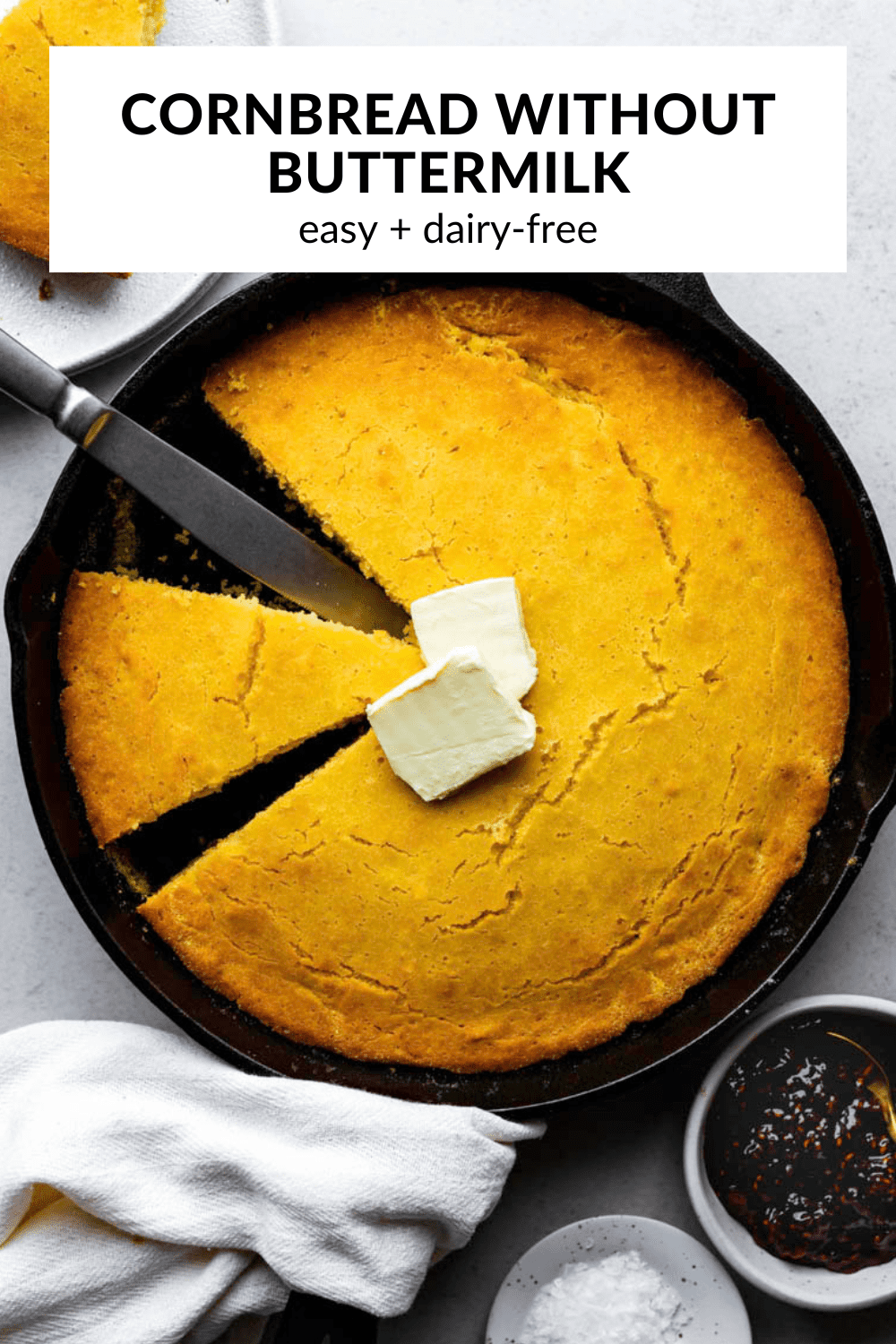
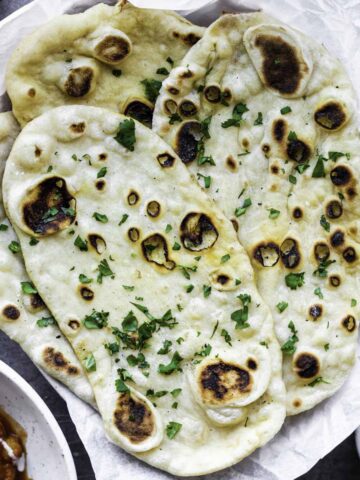
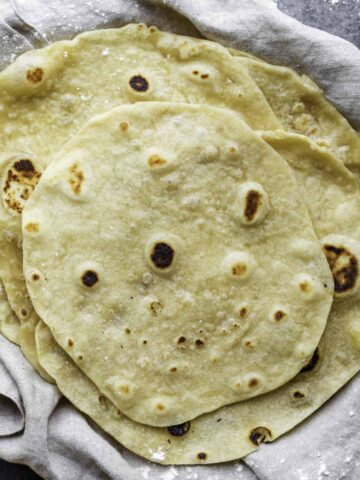
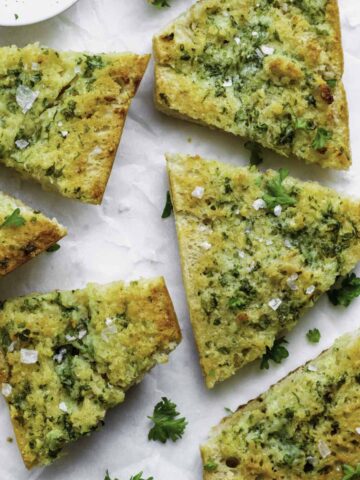
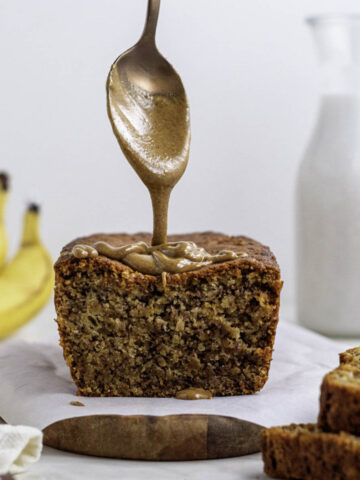
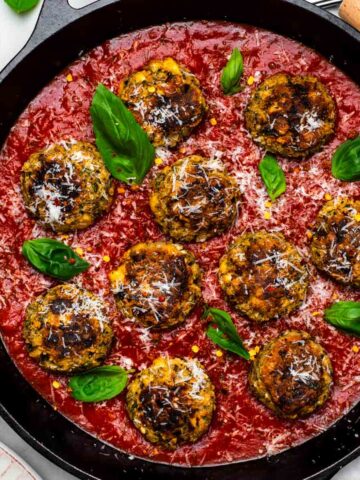
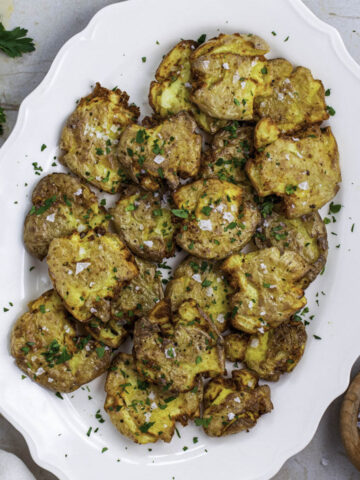
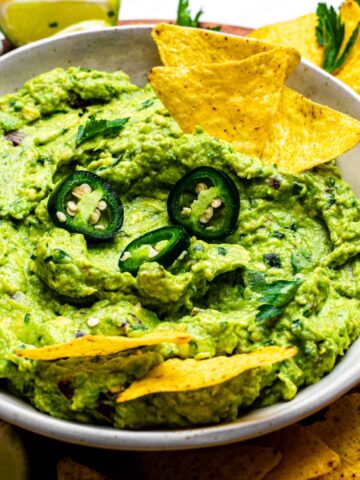
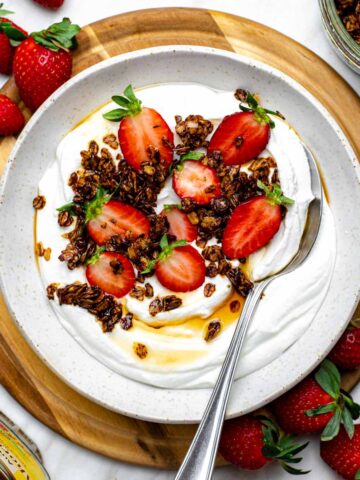
Leave a Reply